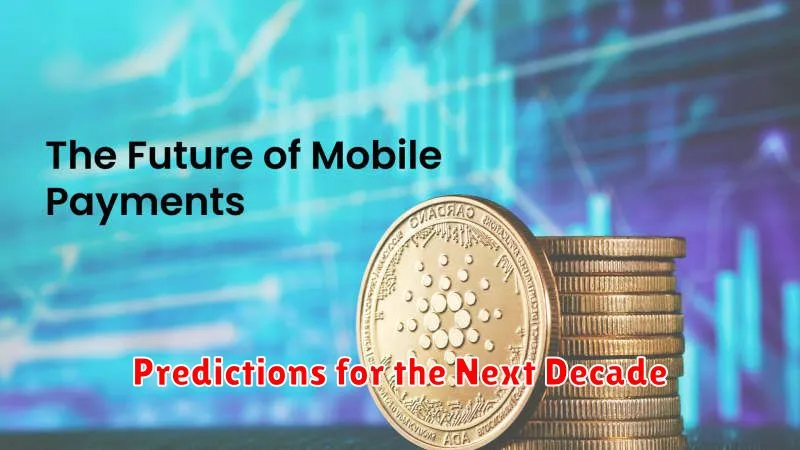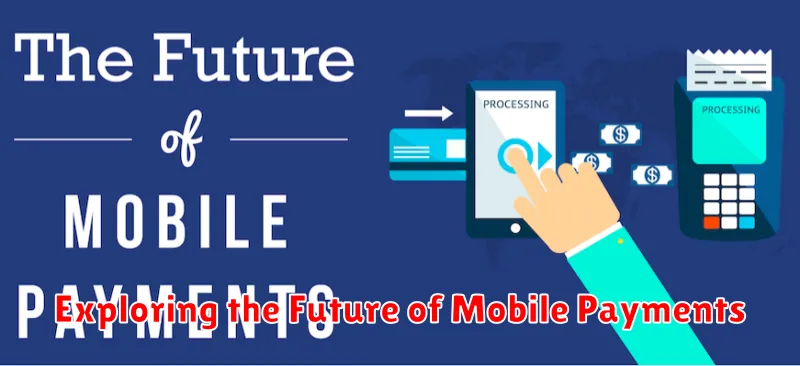The future of mobile payments is rapidly evolving, transforming how we conduct transactions in an increasingly digital world. From contactless taps and QR code scans to biometric authentication and digital wallets, the landscape of mobile payments is constantly expanding, offering consumers greater convenience, speed, and security. This article will delve into the key trends and technologies shaping the future of mobile payments, exploring the potential impact on businesses, consumers, and the global economy. We’ll examine the rise of mobile wallets, the growing adoption of contactless payments, and the emergence of innovative solutions like peer-to-peer (P2P) payments and blockchain technology in the mobile payment ecosystem.
Understanding the future of mobile payments is crucial for businesses seeking to remain competitive and cater to the evolving needs of their customers. This exploration will provide insights into the latest advancements in mobile payment technology, including the role of artificial intelligence (AI) and machine learning in enhancing security and fraud prevention. We’ll also analyze the challenges and opportunities presented by the growth of mobile payments, addressing issues such as data privacy, regulatory frameworks, and the global interoperability of mobile payment systems. Join us as we navigate the dynamic landscape of mobile payments and uncover the transformative potential of this rapidly evolving technology.
Evolution of Mobile Payments
The evolution of mobile payments has been rapid and transformative. Early stages involved premium SMS messaging for small transactions like ringtones. This evolved into near-field communication (NFC) technology, enabling contactless payments at point-of-sale terminals using smartphones.
The emergence of mobile wallets like Apple Pay and Google Wallet further streamlined the process, securely storing payment information and allowing users to pay with a tap or scan. Simultaneously, peer-to-peer (P2P) payment apps gained traction, facilitating quick and easy money transfers between individuals.
More recently, real-time payment systems and QR code-based payments have become increasingly prevalent, offering faster transaction speeds and broader accessibility, particularly in emerging markets.
Growth of Contactless Payments
The rise of contactless payments has been significant in recent years. Driven by factors such as increased smartphone adoption and the COVID-19 pandemic, consumers are increasingly opting for touch-free transactions.
This growth is evident in the rising number of contactless payment terminals and the increasing transaction volumes globally. Near Field Communication (NFC) technology, the backbone of contactless payments, has become increasingly prevalent in smartphones and other devices, facilitating wider adoption.
The convenience and speed offered by contactless payments contribute significantly to its popularity. Consumers can complete transactions quickly and easily, simply by tapping their card or device on a payment terminal. This enhanced user experience is a key driver of the ongoing growth of contactless payments.
Rise of Digital Wallets

Digital wallets are rapidly transforming the mobile payment landscape. These virtual wallets store payment information securely on mobile devices, enabling users to make contactless transactions quickly and conveniently. This shift away from physical cards is driven by several factors.
Increased smartphone penetration plays a crucial role, providing the necessary hardware for widespread adoption. Furthermore, the enhanced security features of digital wallets, such as tokenization and biometric authentication, offer better protection against fraud compared to traditional payment methods.
The convenience factor also contributes significantly to the rise of digital wallets. Users can store multiple cards and loyalty programs within a single app, streamlining the checkout process. This ease of use, combined with increasing merchant acceptance, fuels the continued growth and popularity of digital wallets.
Security Innovations in Payments
Biometric authentication is becoming increasingly prevalent, utilizing fingerprint scanning, facial recognition, and even voice recognition to verify user identity. This adds a layer of security beyond traditional passwords and PINs.
Tokenization replaces sensitive card data with unique, non-sensitive tokens. This protects actual card information during transactions, reducing the risk of data breaches.
Artificial intelligence (AI) and machine learning (ML) are employed to detect fraudulent activities in real-time. These systems analyze transaction patterns and user behavior to identify anomalies and prevent unauthorized access.
Blockchain and Mobile Payments
Blockchain technology holds significant potential to revolutionize mobile payments. Its decentralized and cryptographically secure nature offers several advantages. Blockchain can facilitate faster transaction speeds compared to traditional payment systems, often bogged down by intermediaries.
Security is another key benefit. Blockchain’s immutable ledger makes it extremely difficult for fraudulent activities to occur. This enhanced security can build trust among users and encourage wider adoption of mobile payment solutions.
Furthermore, blockchain can reduce transaction costs. By eliminating intermediaries like banks, blockchain enables peer-to-peer transactions, lowering fees for both merchants and consumers.
Integration with IoT Devices
The future of mobile payments is intertwined with the expanding network of Internet of Things (IoT) devices. This integration allows for seamless and automated transactions in a variety of contexts.
Connected cars, for instance, can facilitate automatic payments for tolls, parking, and even fuel. Smart appliances within the home can autonomously replenish supplies when running low, initiating payments without user intervention. Wearable technology, such as smartwatches, further streamlines the payment process, allowing for contactless transactions with a simple gesture.
This convergence of mobile payments and IoT creates a frictionless commerce experience, enhancing convenience for consumers and opening up new opportunities for businesses.
Regulatory Changes and Compliance
The future of mobile payments is intertwined with evolving regulations. Compliance is crucial for sustained growth and maintaining user trust.
Data privacy and security are paramount. Regulations like GDPR and CCPA significantly impact how mobile payment providers handle user information. Staying abreast of these changes is essential for maintaining legal operation.
Anti-money laundering (AML) and know your customer (KYC) regulations also play a significant role. Mobile payment platforms must implement robust systems to prevent illicit activities and verify user identities.
Global Trends and Adoption Rates
Mobile payments are experiencing significant growth worldwide. Emerging markets are leading this surge, driven by increasing smartphone penetration and limited access to traditional banking infrastructure.
Developed economies are also witnessing a steady rise in mobile payment adoption, although at a more measured pace. Factors such as robust existing payment systems and consumer concerns regarding security and privacy influence the rate of adoption in these regions.
Contactless payments, including near-field communication (NFC) technology and QR codes, are becoming increasingly prevalent. The COVID-19 pandemic further accelerated this trend, highlighting the importance of hygienic and touchless transactions.
Consumer Preferences Shifting
Consumer behavior regarding mobile payments is undergoing a significant transformation. Convenience remains a primary driver, with users increasingly valuing speed and ease of transactions. This has led to a rise in contactless payments and mobile wallets.
Security concerns, however, remain a key factor influencing adoption rates. Consumers are increasingly aware of data breaches and fraud, demanding robust security measures from mobile payment providers. Biometric authentication and tokenization are becoming increasingly important for building trust and encouraging wider adoption.
Beyond these core considerations, other factors are shaping preferences. Integration with existing financial platforms and loyalty programs is gaining traction, as users seek seamless experiences. The availability of rewards and incentives also plays a significant role in influencing consumer choice.
Predictions for the Next Decade

The next ten years promise significant evolution in mobile payments. Biometric authentication, including facial and fingerprint recognition, will likely become the dominant security method, further streamlining transactions.
Invisible payments are expected to rise, integrating seamlessly into daily activities. Think automated checkout in stores or fuel pumps that recognize your vehicle and charge your account directly.
The convergence of mobile wallets with other financial services will deepen, offering integrated budgeting, investment tools, and loan access, all within a single app. Furthermore, cross-border mobile payment solutions will become more prevalent, simplifying international commerce and travel.

